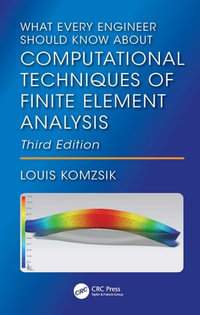
eTEXT
Numerical Ship Hydrodynamics
An assessment of the Gothenburg 2010 Workshop
By: Lars Larsson (Editor), Frederick Stern (Editor), Michel Visonneau (Editor)
eText | 30 September 2013
At a Glance
eText
$239.00
or
Instant online reading in your Booktopia eTextbook Library *
Read online on
Desktop
Tablet
Mobile
Not downloadable to your eReader or an app
Why choose an eTextbook?
Instant Access *
Purchase and read your book immediately
Read Aloud
Listen and follow along as Bookshelf reads to you
Study Tools
Built-in study tools like highlights and more
* eTextbooks are not downloadable to your eReader or an app and can be accessed via web browsers only. You must be connected to the internet and have no technical issues with your device or browser that could prevent the eTextbook from operating.
ISBN: 9789400771895
ISBN-10: 9400771894
Published: 30th September 2013
Format: ePUB
Language: English
Publisher: Springer Nature
You Can Find This eBook In
This product is categorised by
- Non-FictionEngineering & TechnologyMechanical Engineering & MaterialsMechanical Engineering
- Non-FictionEngineering & TechnologyMechanical Engineering & MaterialsMaterials ScienceMechanics of Fluids
- Non-FictionComputing & I.T.Computer Science
- Non-FictionScienceScience in GeneralMaths for Scientists
- Non-FictionSciencePhysicsClassical MathematicsFluid Mechanics
- Non-FictionMathematicsApplied Mathematics
- Non-FictionMathematicsCalculus & Mathematical AnalysisNumerical Analysis






















